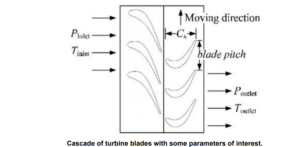Thèse sur “CFD-based reduced-order modeling of a turbine stage for parametric optimization”
Thèse posted 3 mois il y aDescription

Optimization in aerodynamics requires many Computational Fluid Dynamics (CFD) evaluations to adjust the many parameters that are involved in the design of propulsion systems. This justifies the development of reduced-order modeling strategies in order be able to perform the optimization at low-cost and in a short-time range. The most usual technique to address this is to build surrogate models (generalized Polynomial Chaos, Gaussian Process frameworks) that fit input-to-output data produced by a CFD code. One of the drawbacks is that these input-output models do not rely on physical principles, but on statistical regression techniques, which do not allow to control in an appropriate manner the error of the surrogate. One way to circumvent this shortcoming is to use the CFD code, which contains the physical principles (here the Navier-Stokes equations), to also build the input-output relation. For this, after first identifying the subspace in which lies the flowfield with snapshots obtained with the CFD code (sampling of the parametric space), a reduced-order model may be obtained by projecting the governing equations (the CFD code) onto the identified subspace by hyper-reduction, which involves the evaluation of the residuals of the CFD code at few well-chosen points. The overall procedure yields reduced-order models that exhibit error guarantee, that are more accurate for interpolation and extrapolation in the parametric space as the classical surrogate modeling strategies.
The objective of the present PhD is to apply this methodology within a domain decomposition strategy, here a stator-shaft comprising multiple blades. First, a reduced-order model will be built for a single channel between two blades that is valid for variations of parameters (Mach, angle of Attack, etc) within a given design space. Then an overlapping Schwarz method will be used to handle multiple channels to obtain a model that is representative of a whole stator-shaft. Error guarantees will in particular be discussed as a function of the number of sampling points used to determine the subspace, the size of the reduced-space, the number of points used in the hyper-reduction technique and the interaction with the overlapping Schwarz-method to


